How To Increase ROI Of A Google Ads Campaign Launched For A Dropshipping Store
Wondering how to boost your AdWords ROI? Curious to find out what this is, exactly? We’re excited to share our experience of improving this metrics – and to show you how YOU can boost your store performance in the same way!
When a dropshipping business owner needs to measure the effectiveness of advertising campaigns, one of the main metrics is ROI (return on investment). Google Ads ROI is a figure showing the profit you’ve made from your ads compared to the amount of money you’ve spent on them.
To calculate your AdWords ROI, take the revenue from your ads, subtract your overall costs, and divide the difference by your overall costs.
So, ROI formula is the following: ROI = (Revenue – Cost of goods sold) / Cost of goods sold.
What is the key factor of an online store’s success? It is certainly the traffic, especially the quality traffic providing high conversions. Promoting our own dropshipping stores, we try to test all possible traffic sources, and then focus on those that convert better.
We’ve been testing Google Ads for a long time figuring out an optimal strategy. After trying hundreds of keywords, ads and budgeting variants, we finally came to an extremely effective strategy with a 400% ROI in Google Ads which is a great result for this traffic source.
Today we are excited to share this “Huge ROI” Google Ads strategy and give all the details!
The work consisted of two steps:
- Search campaign
- Remarketing campaigns
Let’s take a closer look!
How to increase AdWords ROI with Google Ads Search Campaign
Finding keywords and creating ad groups in Google Ads
Before setting the campaign we carried out an analysis: what store items are the most popular and frequently sold. Google Analytics had already been installed on the website, so we could easily define the most visited pages and figure out the bestsellers – product pages with maximum conversions.
Using the Keyword Planner, we’ve picked the appropriate keywords for each of these pages. These keywords later became the basis for the future advertisements.
Also, we’ve opened the Organic Search report in Google Analytics, and picked the most popular keywords that commonly attract the Internet users to our website:
Then, we’ve distributed all the selected keywords between several Campaigns and Ads Groups.
We used the following principles: “one item – one Ads Group” and “one Campaign – several related Ads Groups”, for example:
Keywords for the “Scarf” ads group:
As the result, we got more than 10 Ads groups in 7 Campaigns:
Creating ads for every separate group
On the next stage, we have created 2 ads types, and tried them for every item. From the experience of our team and acknowledged Google Ads users, we’ve learned that every advertisement should contain:
- Keyword in the Headline
- Same keyword in the Description
- The same keyword in the URL again
- A discount or special offer
- The item’s price (if possible)
- A call to action
Here are the ads types that we have created:
Template 1
Template 2
Quite soon it became obvious that CTR grows significantly if a discount rate is indicated in the headline, so only the first template was left.
We duplicated the items names (the keywords) in the Path field, so that they were highlighted in the ad text to draw more attention.
We added extensions for the whole campaign:
Additional links:
Refinements:
Results
After a time we analyzed the ad groups performance and switched off the ones with low CTR and poor conversions. Finally we kept only items, keywords and ads that provided the highest sales from this advertising channel.
How to increase Google Ads ROI with Remarketing Campaigns
Along with the search campaign we set the following Audiences in Google Analytics for remarketing:
- Visitors who’ve spent 30+ seconds on the website
- Visitors who’ve spent 20+ seconds on the pages of the specified items
For both Audiences there were separate remarketing campaigns created in Google Ads (for the store in general and for the bestsellers).
Creating the ads
We made text ads and banners for graphic ads for every remarketing campaign.
A text ad for the whole website looked as follows:
We copied these text ads from the relevant search campaigns:
Banners for graphic ads were created in 8 sizes: 468*60, 160*600, 336*280, 250*250, 120*600, 300*250, 200*200, 728*90.
All banners included the following:
- Image of the product
- Discount rate
- Item price (for the banners with specific products)
- “Shop now” button
- Store name (otherwise Google would not approve the ad)
The most popular graphic ad format is 300*250 – it brings maximum conversions. Text ad format turned out to be the second most successful version.
Since the remarketing has shown the best effect (3 sales in the very first day), now we gradually add such campaigns for all the store’s popular products.
How we achieved the 400% ROI of Google Ads
We discovered a great potential of Google Ads that we’d underestimated before. It’s not an easy or cheap traffic source, but it turns really effective when smartly used.
At the moment of these tests, the cost per click (search campaign) comprises around $0,14 which is a very low price. It gets even more impressive if you take into account that we target people searching Google for a particular product and that we indicate the product price right in the ads.
It is low click cost combined with thorough targeting that makes it possible to pay our AdWords expenses four times.
So, AdWords ROI is probably the most significant marketing measurement for dropshippers since it shows the real impact of Google Ads for your business. We hope this example will help you in your dropshipping business experience and you’ll share your own success story with us. Download our free Guide to learn more about starting and running a successful dropshipping business!

tutorials and special offers from AliDropship


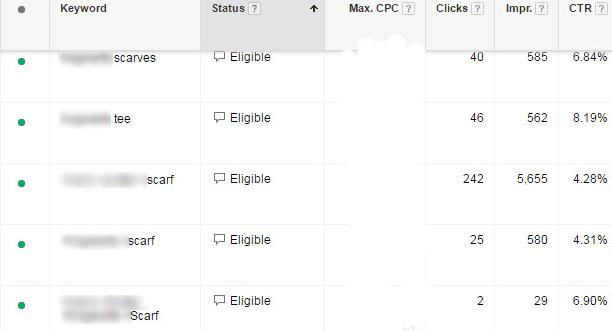

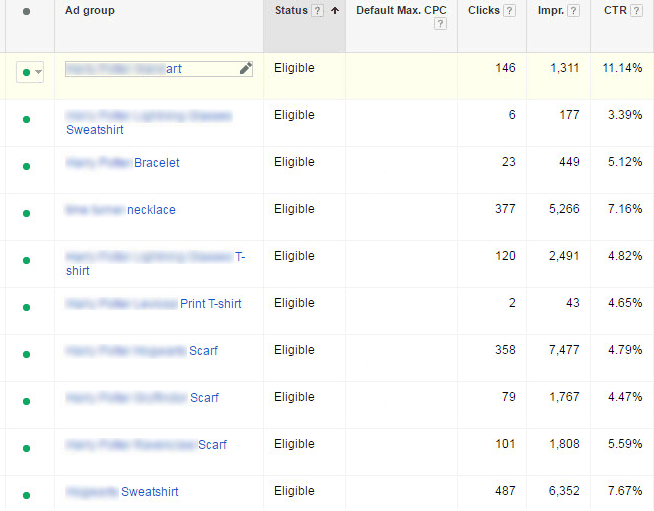
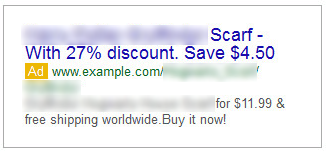
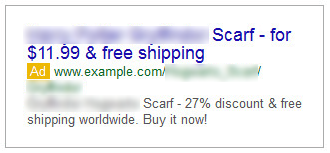
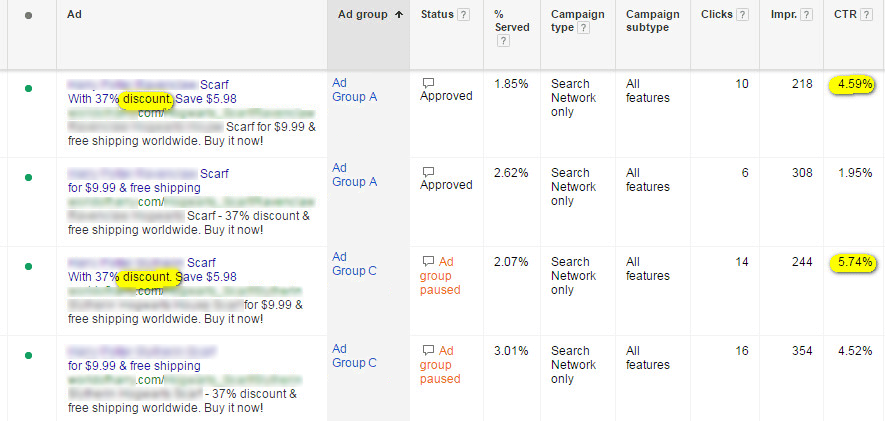
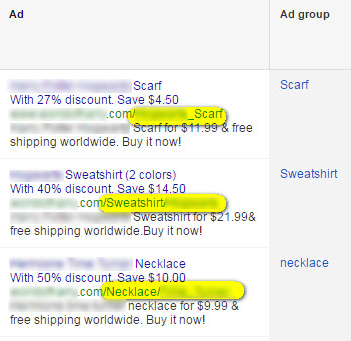


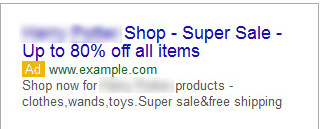
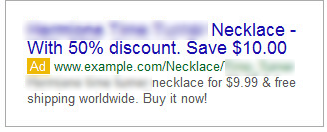
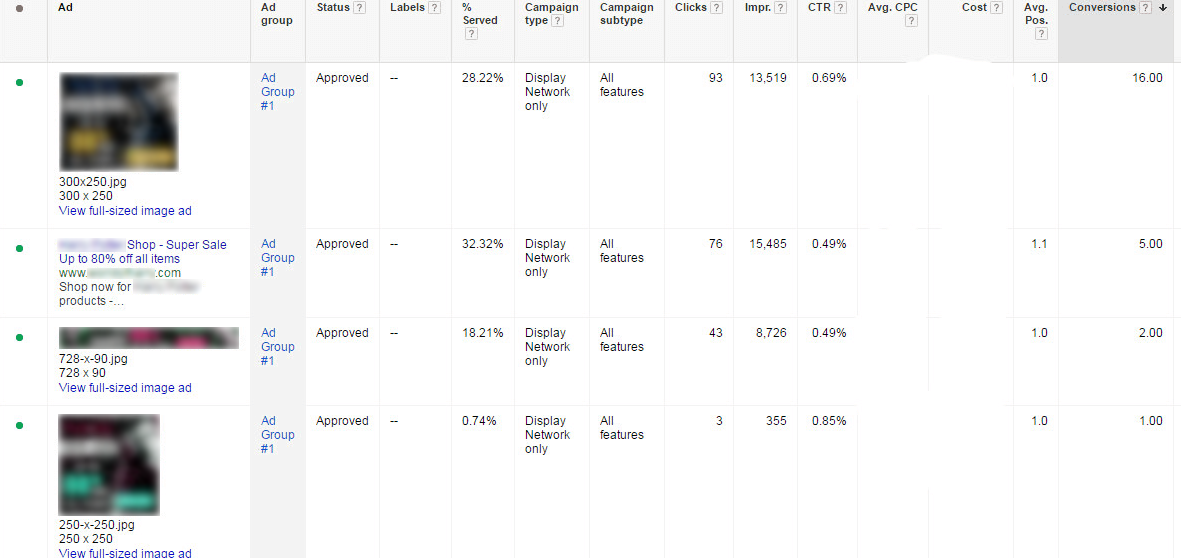














First ! 🙂
Thank You for such a great guide ! I’ll let You know about my resoults 🙂
Hey ZbigniewO I just read this article. It has been 1 year since you posted. What were your results? Thanks!
Thanks for sharing! Not that familiar with Adwords – do you target a specific country?
We target all countries except China, Taiwan, India.
why hide the cpc?
In order to avoid competition for these particular keywords.
May I know what budget do you spend on each Search Campaign? $5/day?
How do you get Google to approve copyrighted / trademarked terms in your ads?
We did nothing, Google just accepted these these ads.